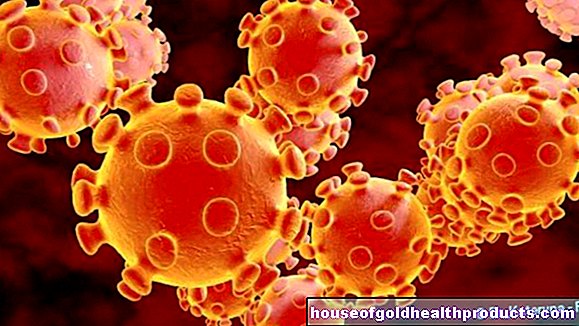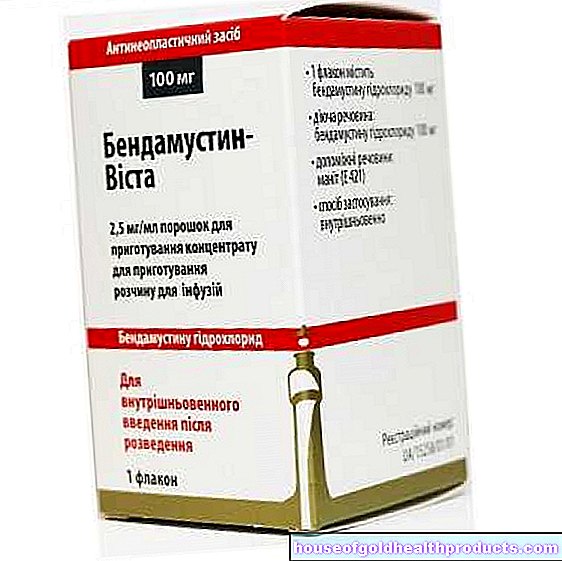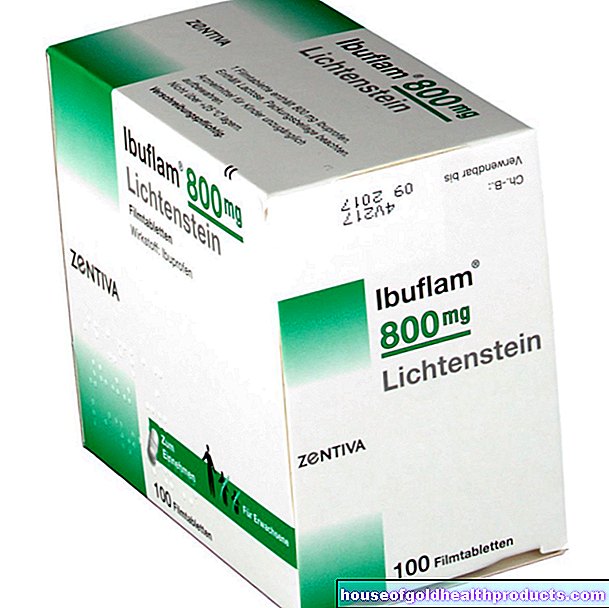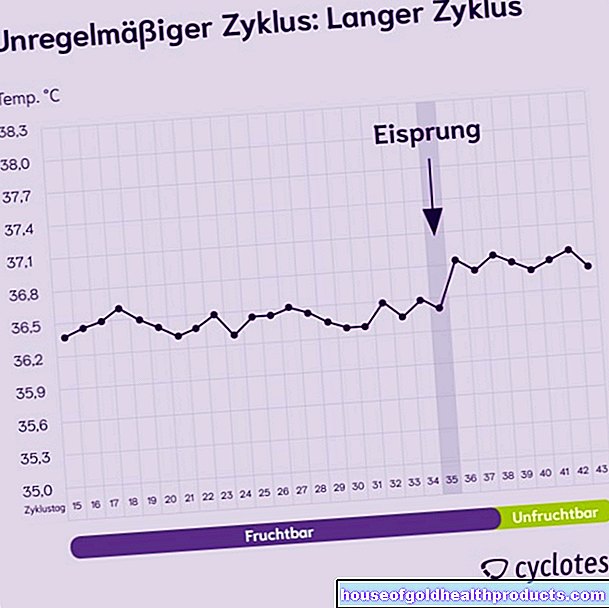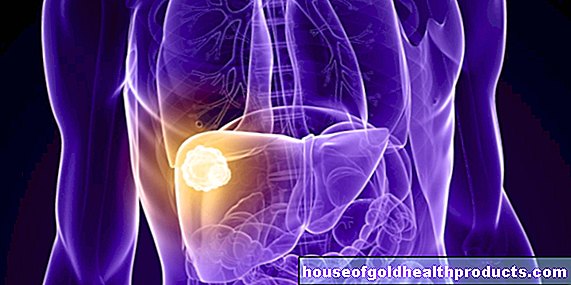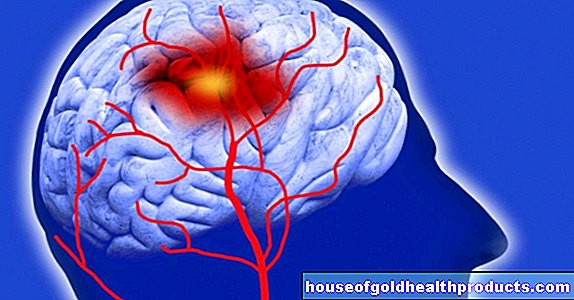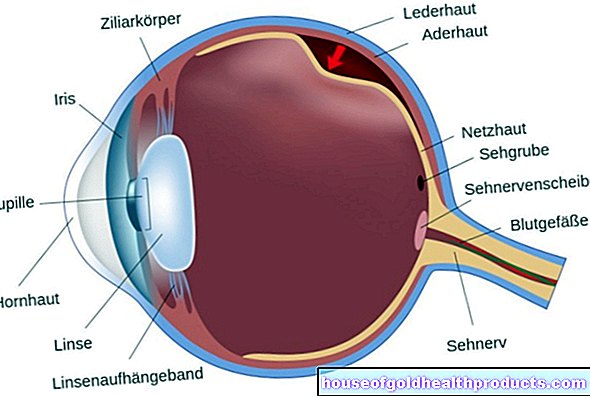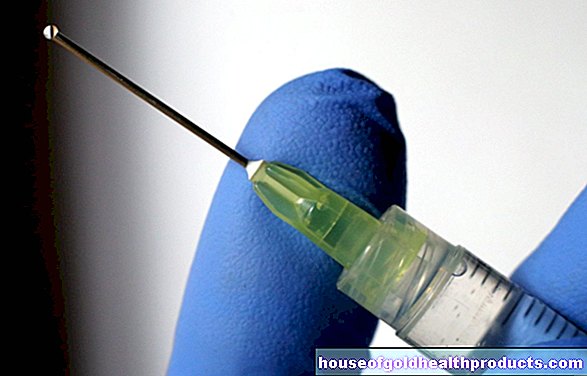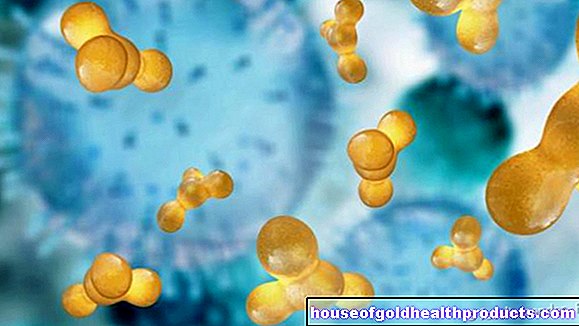nitrite
All content is checked by medical journalists.Nitrite is a nitrogen compound that is formed in bacterial infections of the urinary tract from the nitrate usually contained in the urine. It is therefore measured in the urine with the help of a test strip: Without bacteria, the substance does not exist in the urine, so that its detection confirms the bacterial infestation of the urinary tract. Read here when to determine the nitrite and which factors can falsify the laboratory result.
What is nitrite?
Nitrite is an inorganic nitrogen compound. It is formed by certain bacteria in the context of urinary tract infections, for example enterobacteria (E. coli, Klebsiella and others). A test strip can be used to examine a patient's urine for the presence of the nitrogen compound.
Morning urine is best for the examination. The test strip is immersed in it: If nitrite hits the test field, a chemical reaction occurs and the test field turns pink to purple. It only takes a few minutes.
In addition to the nitrogen compound nitrite, the doctor can also use the test strip to detect other substances such as blood and blood breakdown products, protein or leukocytes (white blood cells).
When is nitrite determined?
The urine test for nitrite is always carried out if there is a suspicion of a urinary tract infection. This is the case, for example, with the following complaints:
- difficult and painful emptying of the bladder
- frequent urge to urinate with only small amounts of urine being emptied (pollakiuria)
- Pelvic pain
Nitrite reference values
Since nitrite cannot be detected in healthy people, there are no normal values. As soon as the test strip shows that the nitrogen compound is present in the urine, the test is positive.
When is the nitrite decreased?
Since the urine of a healthy person does not contain this nitrogen compound at all, there is also no lowered reading.
When is the nitrite increased?
If the nitrite test is positive, the urine generally contains the nitrogen compound. This means that bacteria have settled in the urinary tract, which produce the nitrogen compound as a metabolic product. A positive test result generally indicates a bacterial infection of the urinary tract or bladder.
Caution: The test for nitrite in the urine is quite prone to interference: If the urine sample is left around for a long time and the test strip is only then dipped in, false positive results will occur.
On the other hand, the test can be negative despite an actual urinary tract infection. Such a false negative test result occurs, for example, if the urine contains a lot of ascorbic acid (vitamin C) or was only stored in the urinary bladder for a very short time before the sample was given. Urinary tract infections can also be caused by bacteria that do not produce nitrite, which means that the test will also be negative.
What to do if the nitrite has changed?
Uncomplicated urinary tract infections can usually heal without drug therapy. In many cases it is sufficient for patients to drink plenty of fluids and keep their abdomen warm.
However, if kidney problems occur or if the patient is pregnant, treatment with antibiotics is indicated. These are often simply taken in tablet form for a few days. After the treatment, the doctor will check whether the medication was able to lower the nitrite. To check the success of the therapy, a new urine test is necessary.
Tags: smoking organ systems interview





